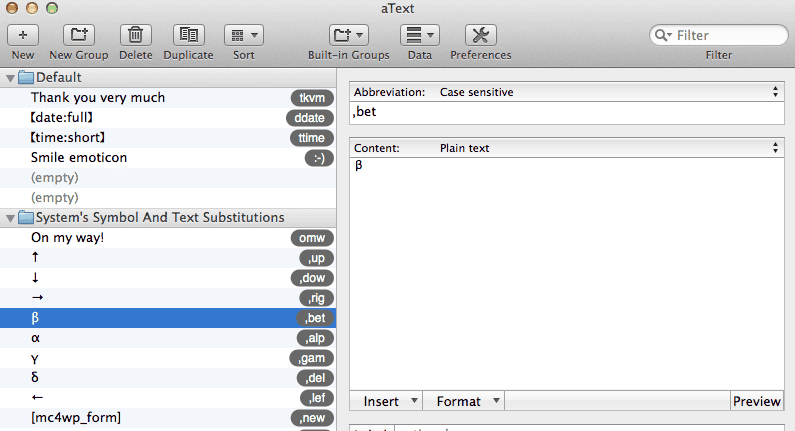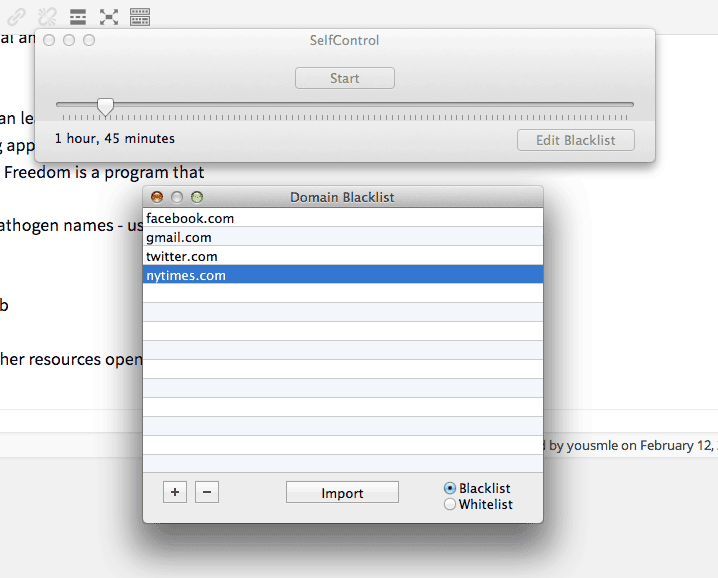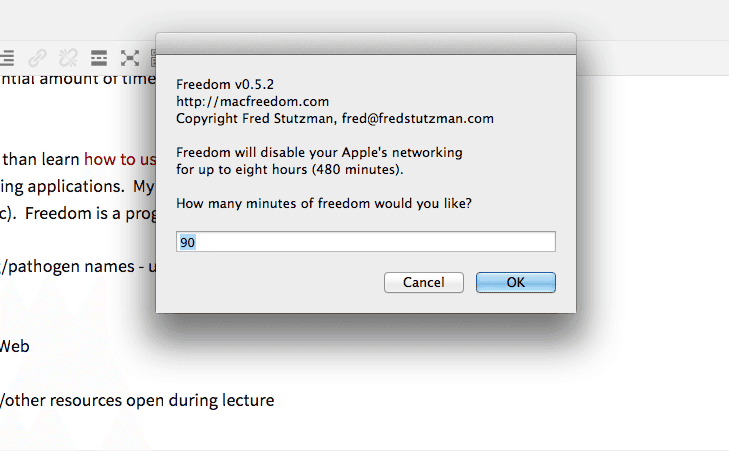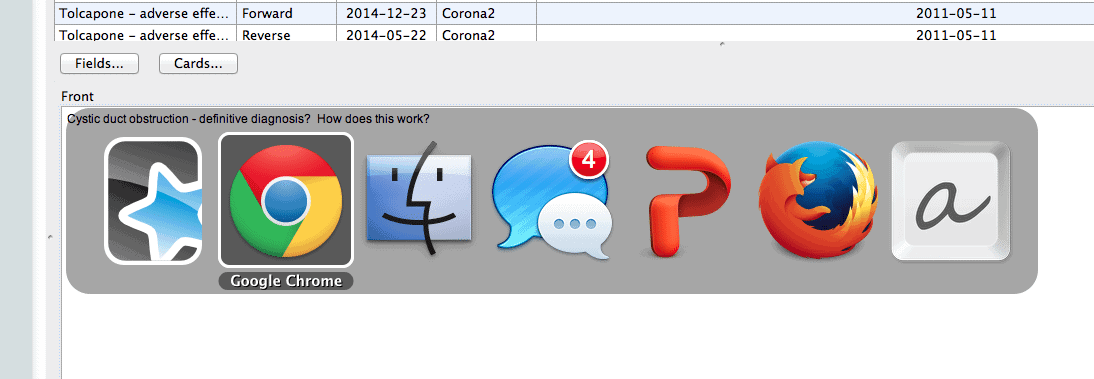
Every medical student has had occasional (or near-constant) thoughts that there aren’t nearly enough hours in the day. Class lectures, lab courses, discussion groups, assignments, clinic work, research projects, applications…it all adds up. For those of you using the YOUSMLE method, you already know the number of hours you can free up in your day simply by studying more efficiently. Here, I outline 6 tips to streamline your studying, and free up time for life. Even if you don’t use Anki (yet) for your studying, many of these tips can help you save hours each day!
1. Switch between programs using “Command + Tab” (Mac) or “Alt + Tab” (PC) and between windows using “Command + `” (Mac)
Anyone using a computer has more than one program on at a time. Switching between them You may be switching between Preview to read the syllabus, Chrome to cross-reference it with Wikipedia, and a Mail client to check the latest Facebook friend request. To switch between programs, most people will click on the program they want with their mouse, wasting valuable time. Instead, to switch between programs in OSX, simply hold “Command ⌘” then hit “Tab” (For PC: “Alt,” then “Tab”). There should be a horizontal list of open programs that displays, like below.
On a Mac, you can also switch between open windows of a program (e.g. switch between a “First Aid” copy and “Goljan Pathology” so you can quickly reference between each other) by holding “Command ⌘” and then ` (the key just below the “esc” key at the top left of your keyboard). It may seem like a small thing, but when you figure that you switch between programs on your computer dozens if not hundreds of times in a day, and you could save 5 seconds on average per time, then multiply that over the months/years of your studying, this one tip could save you a lot of hassle and tons of hours. For further tips, visit this great tutorial here by Alex Spencer.
2. Text expander program

3. Cards on the go: AnkiMobile, AnkiWeb
There are constantly small chunks of time throughout the day. To me, using this downtime effectively often meant the difference between coming home to hours of studying, or simply being able to relax. Using either the AnkiMobile app for your iPhone or Ankiweb if you have internet access, we can review flashcards during the day, be it waiting for a friend, walking to class, or in-between lectures. Another tip: if you’re going to the gym for a cardio work-out, consider bringing your Anki cards with you! Whenever I go to the gym, I can both get in my workout, as well as finish all my cards! My goal on clerkships was to be done with all of my flashcards by the time I came home, so I could relax. At least 80% of the time, I was able to find enough time to do so.
4. Internet-limiting programs
The internet is a fantastic resource, but sometimes often it can do more harm than good to our focus on our studies. How many times have we went on Wikipedia to reference something, then think to check our e-mail, which tells us about our Facebook friend request, which leads us on to…well, you get the idea. Sadly, it took me many unproductive hours to recognize what research has already demonstrated: distractions are frequent, and require a substantial amount of time (25 minutes on average) to return to the original task. One of the best things I did (other than learn how to use Anki effectively to crush Step 1) was to use internet-blocking/limiting applications. My two favorite are Freedom (for Mac, PC), and Self-Control (for Mac). Self-control allows for you to block specific websites. So let’s say I wanted to block Facebook, but wanted to still be able to access USMLE World, I could add facebook.com to my “Blacklist” (blocked sites), which would still allow me to access everything else. The benefit is that it is targeted, but the downside to this is that it is easier to get around, since if I forget to block a site, or stumble upon another of the many distractions on the internet, I’m out of luck 

5. Keyboard Copy (Command ⌘ / Ctrl + c) + Paste (Command ⌘ / Ctrl + v)
I include this not to be facetious, but because there are lots of us out there who know the basic “copy + paste” commands, but we forget to use them. Just like with the “Command ⌘ / Alt + Tab” command to switch between windows, just using the simple keyboard shortcuts we have learned in the past (and from this article!) but don’t use regularly can save lots of time.
6. Have electronic copies of First Aid/other resources open during lecture
This is something that I wish I had started doing sooner. Most medical students I’ve spoken with have expressed frustration with how difficult it is to pick out the “important” details. “I had no idea they were going to test me on that fact,” is a common post-exam refrain. What I wish I had known sooner is that many of the facts in First Aid and my other references were the exact things that the lecturers were going to emphasize on their exams, even if it was unclear to me during the lecture. High-yield Step 1 tip: Have an electronic copy of First Aid open during your lectures. Then, using the “switch between programs/windows” keyboard shortcuts found at the beginning of this article, quickly search for the appropriate section of First Aid. For example, if the lecture were discussing Chronic Granulomatous Disease (CGD), I would quickly search for the appropriate section in First Aid, and quickly read the short blurb on CGD. This way, I can focus on the most Step 1-relevant facts, as well as give me some insight into what the lecturers may choose to test me on. Obviously, there is NO guarantee that the lecturers will test only the information you could find in First Aid, but it is a much more effective starting point than trying to memorize every word in the lecture.
There you have it!
I hope you found these tips helpful! However, I have learned so much from the YOUSMLE community, and I’m sure there are many more useful tips out there. Please leave us your favorite tip below in the comment sections!









Hey Alec! Great tips! Is there any keyboard short cut to make text bold in Anki?
Thanks!
How do you use aText’s symbols in conjunction with Anki? Did you copy and paste it?
Hi Phuong,
Thank you so much for your message. aText, as just a text expander, basically allows you to copy in whatever text you would like into Anki. Anki will recognize all of the basic symbols like alpha, beta, delta, as well as arrows, etc. but instead of having to copy them from somewhere else, you can set aText up to insert those terms for you. Does this make sense?
Alec
man I want your Brain
Haha, thanks, Lee. But honestly, it's not my brain. I honestly believe that ANYONE can accomplish this – it's just a matter of doing one's best to understand everything from the pathogenesis to the presentation, then making sure that you never forget it by making good cards and then doing spaced repetition.
Just got aText. Finally the tactics are complete.
Fantastic!! I wish I had gotten it BEFORE I had taken Step 1…